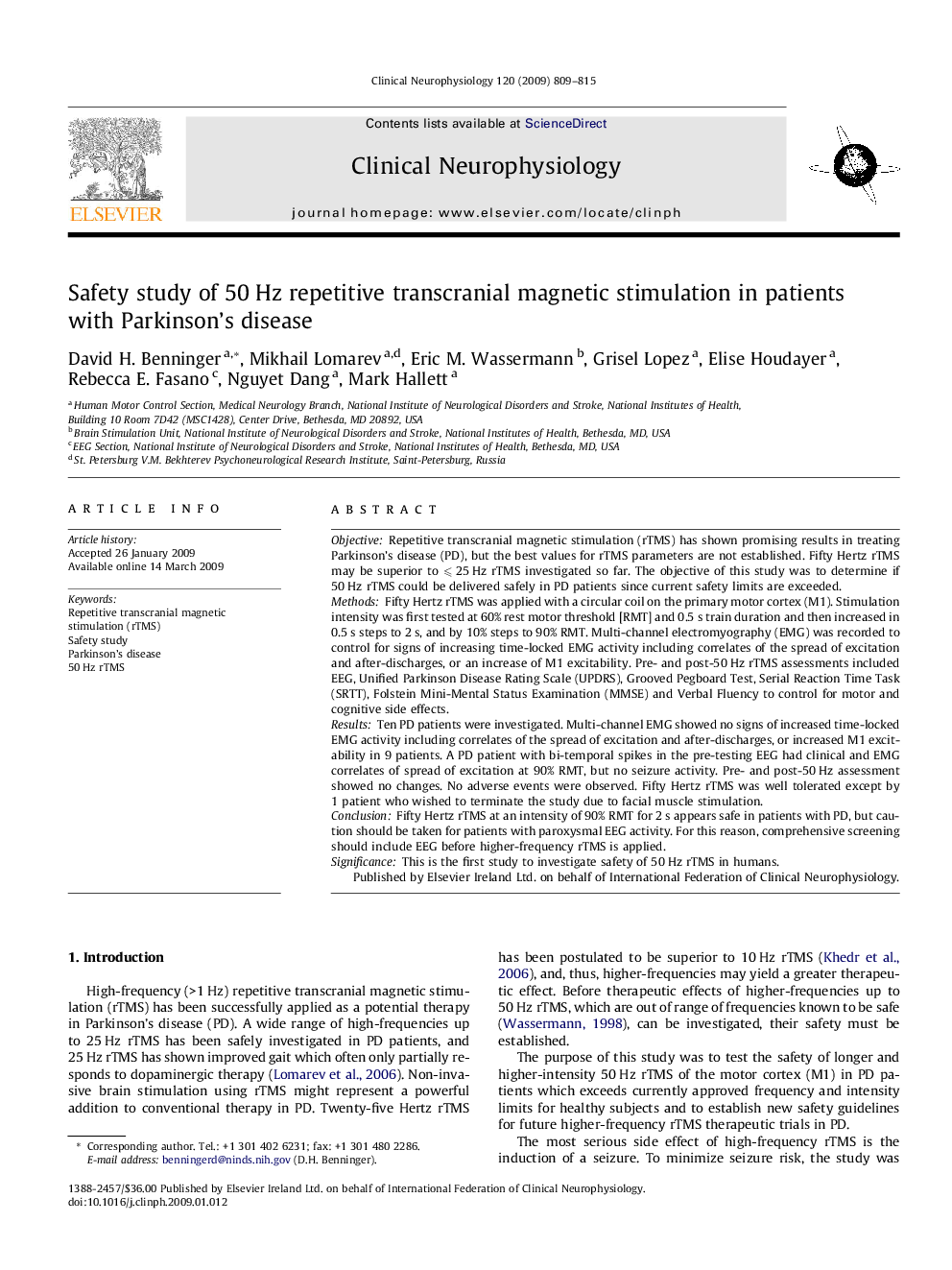| Article ID | Journal | Published Year | Pages | File Type |
|---|---|---|---|---|
| 3046328 | Clinical Neurophysiology | 2009 | 7 Pages |
ObjectiveRepetitive transcranial magnetic stimulation (rTMS) has shown promising results in treating Parkinson’s disease (PD), but the best values for rTMS parameters are not established. Fifty Hertz rTMS may be superior to ⩽25Hz rTMS investigated so far. The objective of this study was to determine if 50 Hz rTMS could be delivered safely in PD patients since current safety limits are exceeded.MethodsFifty Hertz rTMS was applied with a circular coil on the primary motor cortex (M1). Stimulation intensity was first tested at 60% rest motor threshold [RMT] and 0.5 s train duration and then increased in 0.5 s steps to 2 s, and by 10% steps to 90% RMT. Multi-channel electromyography (EMG) was recorded to control for signs of increasing time-locked EMG activity including correlates of the spread of excitation and after-discharges, or an increase of M1 excitability. Pre- and post-50 Hz rTMS assessments included EEG, Unified Parkinson Disease Rating Scale (UPDRS), Grooved Pegboard Test, Serial Reaction Time Task (SRTT), Folstein Mini-Mental Status Examination (MMSE) and Verbal Fluency to control for motor and cognitive side effects.ResultsTen PD patients were investigated. Multi-channel EMG showed no signs of increased time-locked EMG activity including correlates of the spread of excitation and after-discharges, or increased M1 excitability in 9 patients. A PD patient with bi-temporal spikes in the pre-testing EEG had clinical and EMG correlates of spread of excitation at 90% RMT, but no seizure activity. Pre- and post-50 Hz assessment showed no changes. No adverse events were observed. Fifty Hertz rTMS was well tolerated except by 1 patient who wished to terminate the study due to facial muscle stimulation.ConclusionFifty Hertz rTMS at an intensity of 90% RMT for 2 s appears safe in patients with PD, but caution should be taken for patients with paroxysmal EEG activity. For this reason, comprehensive screening should include EEG before higher-frequency rTMS is applied.SignificanceThis is the first study to investigate safety of 50 Hz rTMS in humans.
